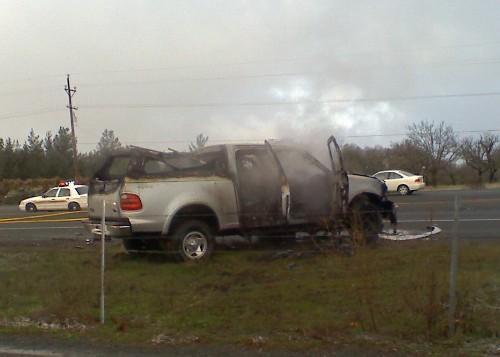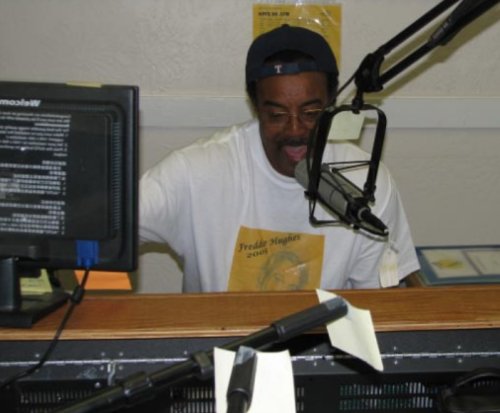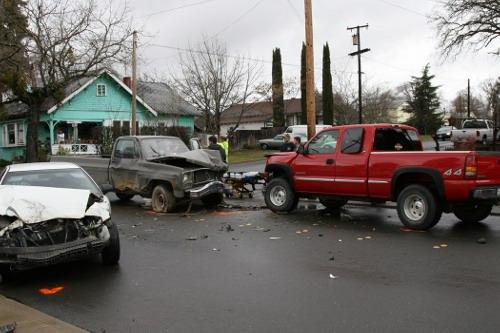LAKEPORT – The prosecution against a Lucerne couple took an unexpected turn on Wednesday, when the deputy district attorney on the case decided to request a dismissal in order to bring the case back with the help of a financial expert.
Rowland Mosser, 64, and Jayne Mosser, 61, were in Judge Richard Martin's Department 2 courtroom for the third day of their preliminary hearing, which began last month, as Lake County News has reported.
The proceedings already had gotten under way when Deputy District Attorney Gary Luck made the announcement to the court.
“At this point we will be dismissing the charges and refiling the complaints,” Luck said.
The former Lucerne Alpine Senior Center executive director, Rowland Mosser was charged with felony embezzlement for allegedly taking funds from the center between Jan. 1, 2005, and Aug. 12, 2005. He also was facing felony counts of grand theft by an employee, grand theft and keeping a false record of government funds.
Jayne Mosser was charged with felony grand theft, which the prosecution alleged took place in the same time frame as the charges against her husband.
The couple sat in the jury box while, across the room, about 10 people in the audience – a mix of seniors and other Lucerne residents who have followed the case – watched the proceedings.
On Wednesday, Investigator Ron Larsen of the District Attorney's Office had returned to the stand, and was undergoing cross-examination by Judy Conard, representing Rowland Mosser, and Mitchell Hauptman, who is defending Jayne Mosser.
During the hour of cross examination, Conard and Hauptman began a steady assault on the district attorney's case, questioning Larsen in detail about the center's finances and the banking evidence on which the allegations were based.
The line of questioning zeroed in on third-party audits and assessments of the center's books, with Larsen relating statements made to him by Diane Plante, a certified public accountant who the center had hired to try to reconstruct its financial records after Mosser left in August of 2005, according to testimony.
However, after the first hour of the proceedings, Luck called for a break and returned 15 minutes later to request the dismissal and explain his plans for moving forward with the case.
Luck said he will bring a forensic accounting expert in to work on the case and explain the financial details.
“The banking records are extensive,” said Luck.
Larsen has decades of experience in criminal investigations, but he doesn't possess the type of forensic accounting skills that Luck believes is necessary to “close the gap” in the evidence and explaining it to the court.
Judge Richard Martin granted Luck's motion to dismiss the case, and also ordered the $10,000 bonds against both of the Mossers to be exonerated.
Defense works to unravel case
Conard, who had begun cross-examining Larsen on Tuesday, continued with her questioning when the case reconvened Wednesday morning.
Referring to evidence presented the previous day, she questioned Larsen about a cash account that Plante had reviewed using QuickBooks. Plante, a professional QuickBooks advisor, had told Larsen that she estimated that, based on deposit records, a center cash account should have had in excess of $60,000 in it.
Conard asked if Larsen had any evidence – such as spreadsheets – to support Plante's statement. He said he didn't.
She asked if he had reviewed the bank accounts of any of the center's other employees, its board members or anyone who had access to the center's cash revenues. No, Larsen replied.
Did he find checks from the center in the Mossers' account? Yes, Larsen said, in the form of Rowland Mosser's paychecks.
There also was a large cash deposit from 2003, for $167,674, from the Emmett A. Larkin Co., which was stock or brokerage income but was not related to the center's funds.
Conard questioned Larsen about whether or not records he subpoenaed from Robinson Rancheria Resort and Casino showed any large losses from the Mossers.
Luck objected to the questioning, which Conard defended, saying the prosecution was accusing the couple of taking the funds and using it at places like the casino. Martin overruled the objection, and Larsen answered that he found no signs of large losses from the couple.
Larsen, who seized Mosser's computer via a search warrant in January of 2008, said he found some senior center records on the computer but, when asked if he found anything showing the Mossers were taking money from the center and using it for their own purposes, his reply was no.
Conard then focused on an audit of the center's books for July 2002 through June 2004, conducted by certified public accountant Joan Sturges of Kelseyville.
She asked if Larsen found the audit complete; he replied he wasn't qualified to answer the question. He did confirm that he spoke with Plante about the audit and that she made comments about it, which neither Conard nor Luck asked Larsen to state during testimony.
Larsen also stated, in response to a question from Conard, that he hadn't gone to Sturges to question her about the audit.
Luck objected to the relevance of the questioning about the audit, which he said was for a time period a year and a half before the crimes were alleged to have taken place. “It has nothing to do with the essential facts of the case.”
Conard responded that she was trying to rebut testimony about the center's taxes, which Larsen had testified had not been paid for several years.
Luck said the taxes weren't paid, and many other outstanding obligations for the center weren't paid from money going through Rowland Mosser's hands.
“Some of the gaps haven't been filled here,” said Martin, noting that it would make a difference in the testimony if the money went to the IRS and not Mosser. He also pointed out that no one has asked what Plante's comments about the audit were.
Conard responded that it didn't matter what the comments were if they didn't check back with the original auditor.
Martin then ruled that while the issues of the tax payments was tangential, it also was relevant, and he overruled Luck's objection.
Conard questioned if Larsen found any proof of the center's missing money being deposited into the Mossers' accounts. “I don't believe so,” he said.
She pressed him on where the checks were being deposited. Larsen said that, for a period of time, once levies were filed against the center's bank accounts, the center couldn't use its accounts without the money being seized. So the majority of the incoming checks were being cashed by Mosser with bills being paid in cash.
Conard asked if Mosser was acting “as a sort of bank.” Larsen said yes.
She asked if the 25 checks submitted on Tuesday at Exhibit 8 went through the bank or were cashed out. “Those 25 checks all went through that senior center bank account,” said Larsen.
Conard asked if they were deposited back into the account. Larsen said they were paid through it.
She said she noted that the Exhibit 8 checks had a note saying they were for deposit only, but then they were redeposited into the bank account. Larsen said she was correct.
Conard said the money was being put back into the senior center. “Did you look at these checks?” she asked, setting the exhibit before Larsen.
“Yes, for months,” he replied.
Conard same the checks are endorsed for the same account on which they were drawn. She then stated that it was done for bookkeeping purposes, which is what Sturges told Mosser to do for tracking purposes.
Luck objected to Conard's statement, saying it called for speculation. Martin agreed and sustained the objection.
Conard asked Larsen if it was true that the cash account was set up to keep as much cash as possible out of the bank so the levies wouldn't get it. “I would assume so, yes,” Larsen said.
She asked if he found any documentation that went along with the checks. “Absolutely,” Larsen said.
Conard asked if a forensic accountant had ever gone through the center's bank accounts. No, Larsen said. Was then and independent audit performed? No, he replied.
She also pointed out that the checks in Exhibit 8 were signed by two center board members, not Rowland Mosser, which Larsen confirmed.
Defense questions different signatures
Conard's questioning lasted roughly a half hour before she handed off to Hauptman, who went directly for Exhibit 8.
Along with those 25 checks, he handed Larsen defendant's Exhibit A, a 12-page document including copies of checks from Westamerica Bank, which Larsen got through a subpoena on the Mossers' private bank records.
The checks, from 2005, had Jayne Mosser's signature.
Hauptman asked if Larsen compared the signatures on the two sets of checks. Larsen said he couldn't recall if he had.
Larsen was asked to compare the checks. “It's not going to be a great leap to conclude that's not her signature, is it?” Hauptman asked.
Luck objected to what he said was the argumentative tone of Hauptman's question, so Hauptman rephrased and asked Larsen to look at the signatures.
“They appear to be different,” said Larsen.
Hauptman then gave him a 47-page document, Exhibit B, with Westamerica Bank statements.
“There never fails to be an 'S' in any of the signatures,” Hauptman said.
“That appears to be correct, yes,” said Larsen.
Hauptman later told Lake County News that Jayne Mosser signs her checks with her middle initial, “S,” for Sleeper. He added that the signatures on the different sets of documents aren't even close.
During cross examination Hauptman also questioned the accuracy of the assessment Plante did on the center's accounts, suggesting it was a matter of “garbage in, garbage out” – if you put in bad information, good won't come out of it.
Hauptman ended his cross-examination of Larsen after only about 15 minutes.
On redirect, Luck asked if the center was paying any of its vendors in 2005. Hauptman objected but was overruled.
When Larsen replied, “A majority of vendors were not paid during that time period,” Hauptman moved to have the statement stricken. Martin agreed, saying it was a yes or no question.
When Luck attempted to ask the question again, Hauptman objected and Martin overruled him, saying that the very thing the court needed to hear was where some of the funds may have gone.
“Did any of those vendors indicate that they had received any payment on the outstanding debt in 2005?" Luck asked. Larsen said no.
Luck asked if the IRS received any payment from the senior center in 2005 while Mosser was still director. Hauptman objected, Martin overruled, and Larsen replied, “No they did not receive any payment during that time.”
He followed with a question about the state Franchise Tax Board and if it was able to obtain tax payments in 2005. Hauptman again objected and was overruled. Larsen said the board was able to obtain some funds through a center bank account.
Luck asked about the status of the Mossers' personal checking account in 2005. Hauptman objected and was overruled before Larsen replied that the account was closed in February 2005 due to nonsufficient funds. He found no other active bank account for the couple from then until August 2005.
When Luck asked Larsen if he had bank statements for the center, Larsen said no, and then Luck said he needed a recess. After that, he returned and announced his plans to seek a dismissal and to refile the case.
“The court was involved in at least two warrants and maybe more with Detective Larsen,” said Martin, explaining to Luck that those warrants – which would have “significant evidentiary value” – can't be considered in a new prosecution unless they are newly presented. Luck said they would be sure to do he foundational work.
Hauptman said later in the day, “It's not at all clear whether the mess is incompetence or thievery.”
He added, “Our view is, it's certainly not thievery.”
E-mail Elizabeth Larson at This email address is being protected from spambots. You need JavaScript enabled to view it..
{mos_sb_discuss:2}
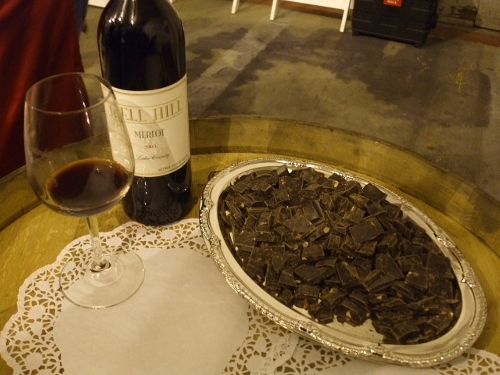
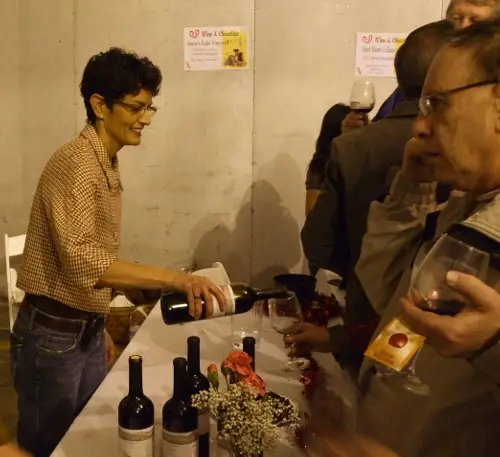
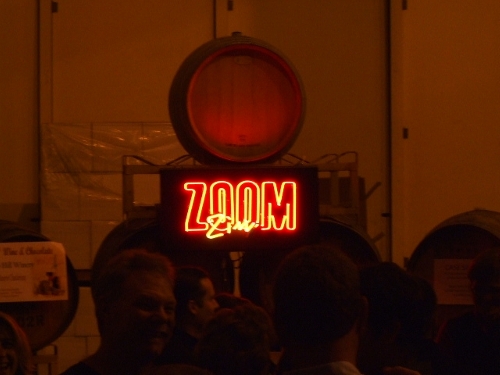

 How to resolve AdBlock issue?
How to resolve AdBlock issue? 